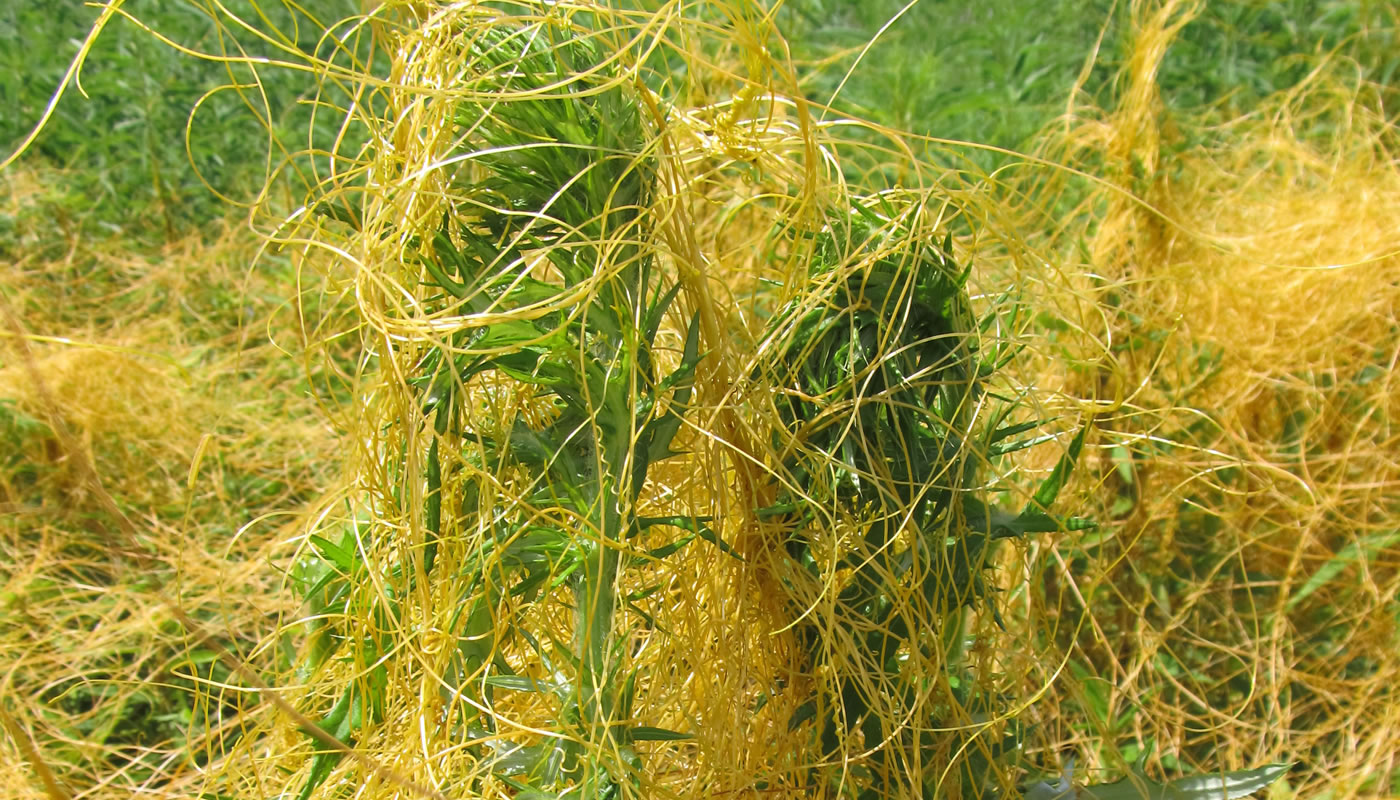Rope dodder, Cuscuta glomerata, is an unusual looking parasitic plant that will soon bloom in moist prairies throughout our preserve system. This plant develops roots as a seedling, but once its minute suckers attach to a host plant, the lower portion (including the roots) withers away.
Rope dodder looks like bright orange spaghetti; it is essentially leafless and completely reliant on its host plant for energy. It is frequently found in prairies, especially after a prescribed burn. Ecologists suspect that seed germination may be stimulated by fire.
This particular species of dodder (Plants of the Chicago Region lists eight dodder species in the Chicago region) often grows on plants in the Aster family and usually on the tallest, most robust plants in the prairie. By parasitizing these dominant plants, rope dodder serves an important ecological function by limiting their production and allowing less dominant plants to thrive.
Rope dodder gets its name from the dense clusters of flowers that wrap around host plants, very much resembling a rope. Keep on the lookout for those flowers in moist prairies from late July until September.

